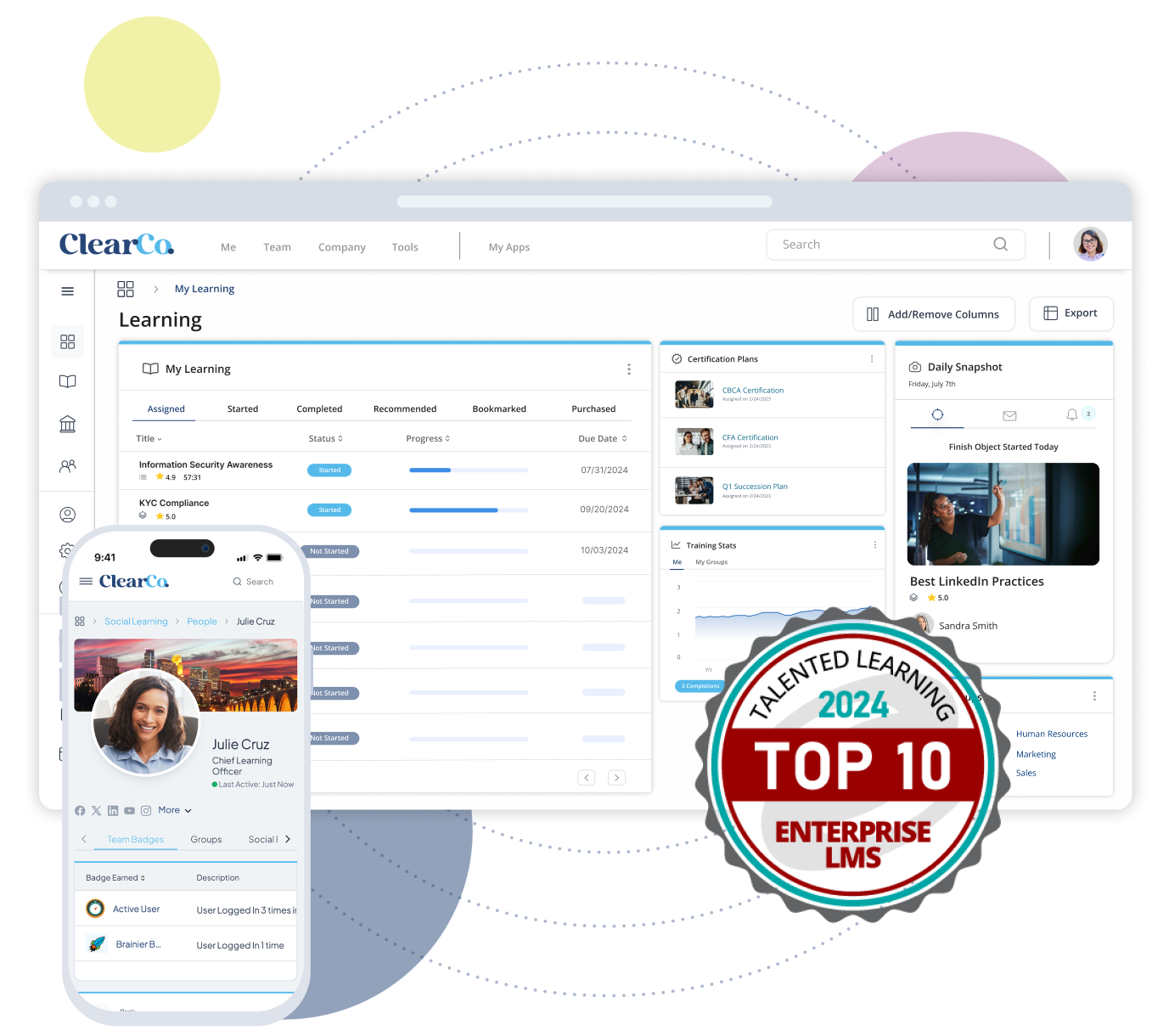Employee learning and development (L&D) has evolved quickly over the past year. While L&D teams’ main focus has been on tracking compliance and creating courses, these departments are now responsible for driving real growth. You’re tasked with looking at which skills your workforce needs to enable business success and finding ways to motivate employees to learn those skills.
At the same time, artificial intelligence (AI) has quickly ushered in the future of work. While AI has simplified much of it, the technology also demands a new skill set to use it effectively. That means your L&D team is essential for any business that wants to sustain its performance, let alone those that want to grow. To stay ahead in 2026 and beyond, L&D leaders must adapt to the new landscape.
Here are six 2026 employee L&D trends that will define the year and help you build a more agile, skilled, and engaged workforce.
🔥 The future of learning is here:1️⃣ GenAI co-pilots
2️⃣ Skills-based learning
3️⃣ People analytics
4️⃣ Microlearning
…and more!
Check out the top 6 trends transforming L&D
#EmployeeDevelopment #LearningCulture
1. Personalize Learning Paths With Gen-AI Co-Pilots
The age of one-size-fits-all is over, and personalization is here. Fortunately, thanks to AI-powered learning management systems (LMS), you won’t need to create hundreds of individual growth tracks. Generative AI co-pilots now personalize learning on demand, adapting to each employee’s needs, skill level, and goals.
Recent research from Harvard Business Review shows that these GenAI tutors are getting real results. The agents delivered 32% better personalization and 17% more relevant feedback compared to traditional classroom training.
Here’s how gen-AI co-pilots make learning truly personal:
- Adaptive Learning Paths: AI adjusts onboarding and upskilling in real time based on performance and experience.
- Real-Time Feedback and Role-Play: AI avatars simulate scenarios and give instant, objective feedback for faster growth.
- Instant Content Curation: Employees get precise answers and resources on the spot, without digging through an LMS.
With AI-driven personalization, engagement and efficiency rise because learning feels relevant and actionable at every step.
2. Reskill Fast With Apprenticeships
Fast-changing technology means you can’t afford to wait for traditional hiring to close skill gaps. Apprenticeships are a practical solution, combining on-the-job experience with a formal training program. They’re not just for jobs in the trades anymore. Today, apprenticeships can prepare workers for roles in anything from data analytics and AI to specialty contracting to healthcare.
Offering on-the-job training helps you attract driven, hard-working employees looking for reliable roles. Six of the ten jobs where apprenticeships are most common are growing faster than average, with apprentices earning $80,000 on average during their first year of employment.
So why should you invest in apprenticeships?
- Accelerated skill development: Employees immediately apply new skills on real projects.
- Stronger loyalty: Apprentices are more likely to stay and grow with your company.
- Cost savings: Replacing an employee costs anywhere from 50%-200% of their salary, making internal development a smart choice.
With a modern apprenticeship model, you can quickly build the future-ready skills your business needs without the high cost of external recruiting.
3. Empower Managers To Create Training
Managers know their teams’ needs best, but traditional content creation is slow and expensive. Now, AI-powered LMS platforms give managers the tools they need to produce and share specific, useful learning content — fast.
The benefits of empowering managers to be creators include:
- Speed and Agility: Managers can address urgent needs in hours or days, not months.
- Hyper-Relevance: Content is created by the person closest to the work, ensuring it’s practical and applicable.
- Increased Engagement: Teams are more likely to engage with content they know was created specifically for them by their leader.
4. Guide With Data, Not Guesswork
With modern LMS platforms, HR and L&D professionals can access real-time analytics that help them quickly make sense of learning trends at their organization. That insight means your employees can get more proactive, focused guidance from their managers. Instead of relying on gut instinct, managers can nurture employees’ strengths and provide specific support in weak areas.
Thanks to LMS analytics, managers can confidently give objective, actionable feedback. That’s one of the drivers of high engagement, which increases the likelihood that a company will be profitable and retain its employees.
The key benefits of analyzing learning data include:
- Pinpoint Accuracy: Focus coaching where it matters most.
- Immediate Intervention: Address issues as they arise.
- Informed Feedback: Build trust using data, not opinion.
- Personalized Support: Adapt coaching to individual needs.
5. Quick, Continuous, & Seamless Microlearning
Microlearning delivers short, skills-based, focused content that employees can complete right in their workflow and revisit as needed. Instead of hours away from work at long training sessions, your people have opportunities to continuously learn in real-world situations. This fast, targeted approach helps build skills right when they’re needed and leads to better long-term business outcomes in other areas, too.
Research shows microlearning can boost knowledge retention by up to 20% compared to traditional training. Microlearning can lead to a 50% increase in employee engagement in training programs and course completion rates that are four times higher.
The top benefits of microlearning include:
- Better Retention: Short lessons make it easier to remember and apply new skills.
- Flexibility: Learn anytime, on any device.
- Higher Engagement: Bite-sized content encourages participation.
- Faster Updates: Content can adapt quickly as employee and business needs change.
6. Driving Engagement With Social Learning
Learning sticks best when it’s a team effort. Social collaboration tools let employees ask questions, swap tips, and build on each other’s knowledge in real time. That makes learning more natural and useful, and strengthens connections between employees.
Employee experience research shows that when people feel they have friends at work and trust and respect their colleagues, productivity is higher and turnover is lower.
Why should your company embrace social learning?
- Knowledge flows faster: Teams get answers and inspiration from each other, not just from top-down courses.
- Engagement climbs: People pay more attention when they can be part of the conversation.
- Teams grow stronger: Solving problems together builds trust and sparks new ideas.
Stay Ahead of the L&D Curve
It’s never too early to get ahead of 2026 learning and development trends. Want to keep your team sharp and future-ready? Stay flexible, stay data-driven, and lean into what works now.
Grab our 2026 L&D Trends & Tips Checklist to put these insights into action today.


